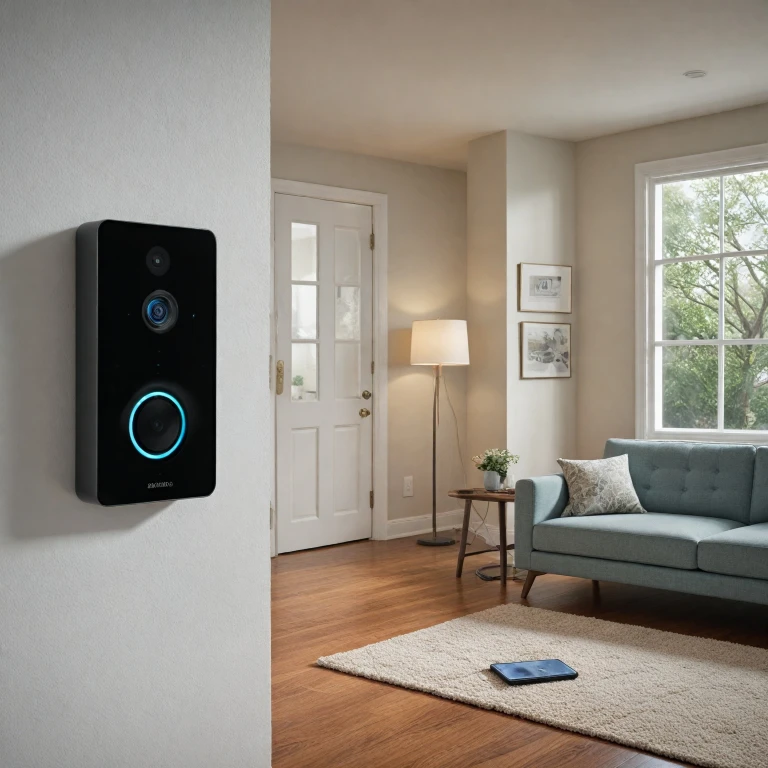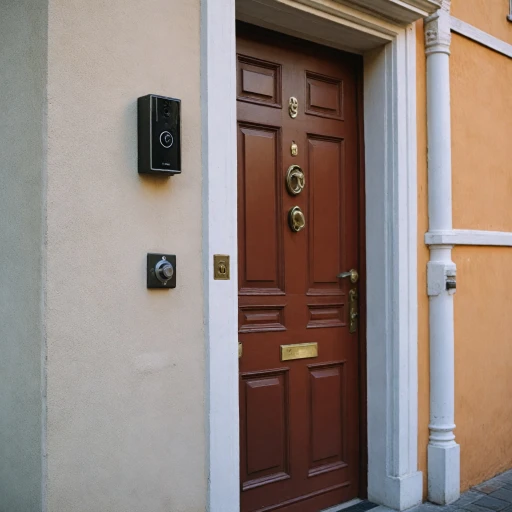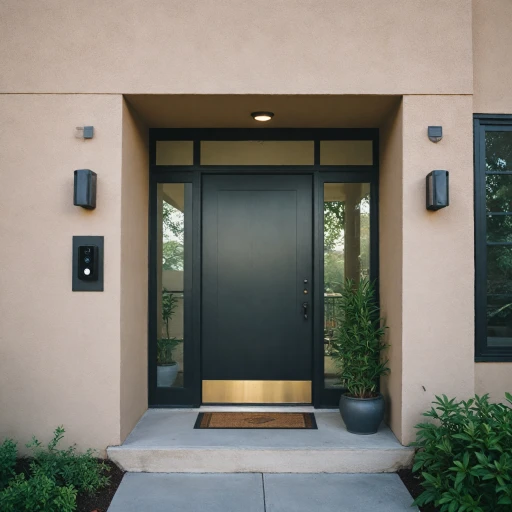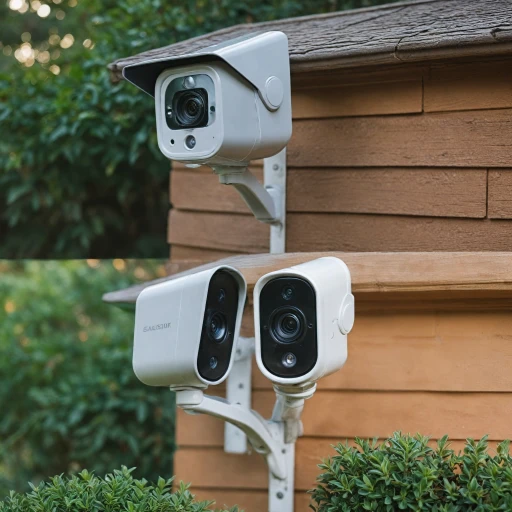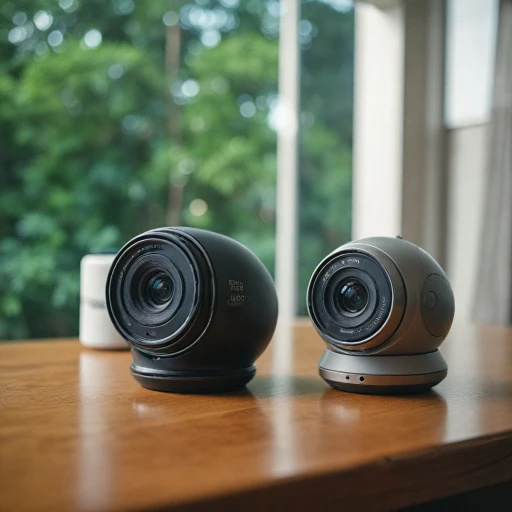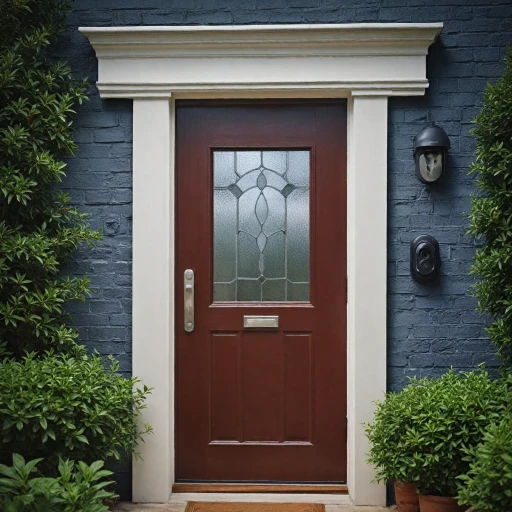Understanding Ring Camera Features
Key Features of Ring Cameras
When considering a smart security system, understanding the features of Ring cameras is crucial. Ring offers a range of devices designed to enhance home security, including video doorbells and security cameras. These devices are equipped with advanced functionalities that make them a popular choice among homeowners.
- Video Quality: Ring cameras provide high-definition video, ensuring clear and detailed footage. This is essential for monitoring activities and identifying individuals at your doorstep.
- Motion Detection: With built-in sensors, Ring cameras can detect motion and send instant alerts to your smartphone, allowing you to respond promptly to any unusual activity.
- Two-Way Audio: The two-way audio feature lets you communicate with visitors remotely, adding an extra layer of convenience and security.
- Integration with Smart Devices: Ring cameras are compatible with Amazon Alexa, allowing for seamless integration with other smart devices in your home.
- Cloud Storage: Ring offers cloud storage options to save video recordings, ensuring you can access footage whenever needed.
Customization and Flexibility
Ring cameras offer flexibility in terms of installation and customization. They can be easily integrated into existing security systems, providing a comprehensive security solution. The Ring app allows users to customize settings, manage devices, and view live feeds from anywhere.
For those interested in exploring more about the functionality and impact of Ring cameras, you can find additional insights in this comprehensive guide.
Comparing Installation and Setup
Installation Ease and Setup Procedure
When it comes to setting up security devices and systems, both Ring and SimpliSafe aim to provide user-friendly installation processes that appeal to most homeowners. Let's dive into how each system approaches this crucial step.
DIY Setup vs. Professional Help
Ring and SimpliSafe offer systems tailored for the DIY enthusiast. With a variety of security cameras, video doorbells, and smart devices, these systems can often be installed with minimal technical knowledge. Ring cameras and alarms are designed to integrate smoothly with smart home assistants like Amazon Alexa, allowing users to control their devices through voice commands effortlessly.
SimpliSafe, on the other hand, also focuses on easy-to-install systems. Although both systems emphasize DIY installation, SimpliSafe offers professional monitoring setups that provide an added layer of security. As a best practice, users might consider professional help if they prefer an even more hands-off approach.
Device Compatibility and Integration
Compatibility with existing smart home ecosystems is a significant consideration. Ring offers compatibility primarily with Alexa, providing seamless integration and control over its security cameras and video doorbells. SimpliSafe, although primarily focusing on security sensors and alarms, doesn't fall behind in offering integration options.
For consumers interested in expanding their devices, SimpliSafe offers a security kit complete with a variety of sensors and an alarm system while Ring provides a comprehensive base station with the best security camera options. Both systems offer video monitoring for added safety measures. Each has its own app designed for ease of use, catering to varying user preferences.
Additional Considerations
When choosing between Ring and SimpliSafe, the type of security you need plays a crucial role. For a more detailed exploration of smart security systems and devices, exploring features such as
Eufy Doorbell could provide valuable insights.
Considering the monthly and annual monitoring plans that both, Ring and SimpliSafe, offer can also influence your decision. While Ring presents several options within their monitoring plans, SimpliSafe focuses on offering comprehensive security solutions tailored to specific needs.
Cost Analysis: SimpliSafe vs. Ring
Analyzing the Financial Aspect of Your Security Choice
When diving into the world of home security, one of the pivotal aspects to consider is the cost. Both SimpliSafe and Ring offer a range of options that can cater to various budgets and security needs. Let’s break down the financial elements to understand which system might better suit your wallet while still offering the protection you need.
- Initial Investment: SimpliSafe typically requires a purchase of a security kit, inclusive of the base station, sensors, and optional smart devices like a video doorbell. Meanwhile, Ring allows for more flexibility with standalone purchases of cameras and accessories, such as the popular ring alarm system.
- Monitoring Plans: Here lies a significant distinction. Ring offers various monitoring plans, with the option for professional monitoring that can work in conjunction with Amazon Alexa and other smart systems. SimpliSafe also provides a diverse range of monitoring services, generally presenting a higher upfront cost for a comprehensive alarm setup compared to Ring.
- Subscription Services: Ring heavily encourages cloud-based services, urging users to subscribe for video access and longer video storage durations. While SimpliSafe offers similar services, they sometimes integrate video monitoring in their higher membership tiers, impacting the monthly cost.
It's important to evaluate your needs thoroughly. Ring's budget-friendly prices might appeal if you aim for a diy security system with smart monitoring. However, if you’re inclined towards a more inclusive security kit that offers best security practices, SimpliSafe’s package might be more encompassing.
For those swayed by simplicity, reviewing the step-by-step guide on effortless Ring doorbell setup can showcase how these systems may integrate seamlessly into your home, complementing the financial aspect with hassle-free installation.
Privacy and Security Concerns with Ring Cameras
Addressing Your Concerns: How Ring Prioritizes Privacy
When evaluating the privacy and security of Ring cameras, it's crucial to take into account how diligent the company is about securing your data and keeping unauthorized eyes away from your property.
Ring, as part of its smart security offerings, has put several measures in place to ensure user privacy. The devices in their system encrypt video footage both in transit and in storage, frequently updating their firmware to patch potential vulnerabilities. For Ring users, knowing that their video doorbell or security cameras are equipped with such protection is a significant reassurance.
Moreover, Ring's app allows users to set specific privacy zones and control who gets access to their video feeds, addressing one of the primary apprehensions people have regarding surveillance systems. This level of customizability ensures you can block out sections of your view and restrict viewing privileges, enhancing your comfort with the system.
Comparatively, even as SimpliSafe offers reliable security features, users may notice differences in how the systems manage data privacy. While both brands continue to develop their technologies, Ring's active emphasis on user control over data access is noteworthy.
Whether integrating these devices with Alexa or other smart apps, the concern about data sharing and privacy remains pertinent for prospective customers. It is advised to stay updated on the brand's privacy policies and any new developments in their security approach.
Understanding such measures can greatly help you determine which security system aligns best with your values and needs, ensuring a balance between maintaining safety and safeguarding privacy.
Customer Support and User Experience
Analyzing the Customer Support and User Experience
When considering whether to invest in Ring or SimpliSafe for your home security needs, examining customer support and user experience is paramount. Both of these security systems aim to provide the best in smart security solutions, but your experience as a user can differ significantly based on the customer support each company offers.
Ring’s customer service has generally been praised for its accessibility. Being a part of the Amazon ecosystem, Ring benefits from Amazon’s established infrastructure. Users can enjoy real-time communication regarding their systems through the Ring app, which is compatible with various smart devices including Alexa. This allows users full control over their video doorbell, security cameras, and other connected devices easily.
Moreover, Ring offers a comprehensive range of resources for DIY security system setups. These include video tutorials and detailed FAQs that guide users through device installations, managing security kits, and optimizing monitoring plans. While phone and chat support are available, some users have pointed out that resolving complex technical issues can be time-consuming.
On the other hand, SimpliSafe offers professional monitoring that includes human-centric customer service. Their support is available 24/7 to address any system-related queries users may encounter. What stands out is SimpliSafe’s focus on personal engagement, which many users appreciate, particularly during emergencies. The company also provides easy-to-follow user guides and troubleshooting resources for their security systems, which cover a wide scope from alarm systems to video monitoring solutions.
SimpliSafe and Ring both offer mobile applications for remote system management. However, reviews have highlighted that SimpliSafe's app interfaces are sometimes less intuitive compared to Ring’s polished smart device integration. Users have noted that while SimpliSafe's app provides necessary alerts and sensor status updates, it may not offer the same smooth interaction as the Ring app, especially when integrating into the broader smart home ecosystem utilizing Alexa Google integration.
In terms of support, Ring tends to innovate with cloud storage offers, which provides a seamless way to manage security footage across multiple cameras and devices, enhancing the user experience in terms of accessibility and reliability.
It's crucial to assess each company's support structure as you weigh which security system aligns best with your needs. Both systems offer distinct advantages, so understanding your preferences in systems integration and customer service can make a significant difference in your overall satisfaction with the product.
Assessing Performance Dynamics in Real-Life Situations
In the realm of real-world security effectiveness, both Simplisafe and Ring boast a comprehensive range of security systems equipped with smart devices, professional monitoring, and video capabilities. However, their real-world performances unveil some nuances worth noting.
Simplisafe's system is often celebrated for its swift response time, especially when paired with professional monitoring plans. This rapid response is partly due to their dedicated base station—a central hub managing the security kit's operations. The reliability of its sensors and alarms helps users feel more secure and ensures faster alerts during any security breaches.
On the other hand, Ring excels with its versatile smart security systems. Its security cameras, including the popular video doorbell, offer crystal-clear video quality and extensive integrations with Amazon Alexa. This makes Ring ideal for users seeking smart device compatibility and video monitoring in nearly real-time. With its Ring Alarm offering, the system provides dynamic alerts and efficient home monitoring, allowing users to easily monitor activities via the app.
Additionally, because Ring operates on cloud storage, users benefit from accessing footage remotely, though this feature heavily depends on the chosen monitoring plan. It’s also noteworthy how Ring’s systems, being DIY security types, empower users through easy-to-install devices, albeit with slight compromises in the speed of professional assistance.
Ultimately, both systems offer unique strengths—Simplisafe with its focus on sensor-based security and Ring with its video-centric, smart integration approach. Deciding between them often hinges on whether one prioritizes rapid professional-monitoring capabilities or sophisticated video and smart device interactions.
